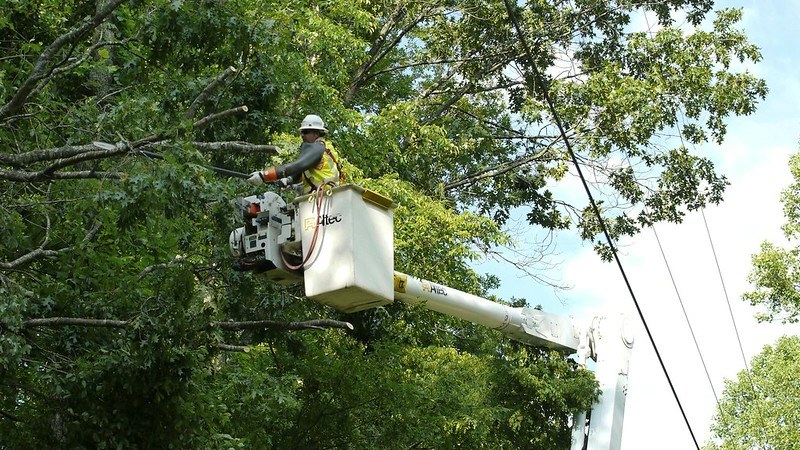Trimming is a crucial component that breathes life to your curb appeal all year long.
Through tree trimming, your plants can generate new foliage in the springtime, so they do not expend all of their vitality on many small branches. Besides, it’s a good idea to remove any dead or unhealthy branches and twigs that can damage property or harm people.
Leaving fragile, brittle tree limbs unattended with snow accumulations on them can lead to a catastrophe, particularly if it’s a large tree. When you eliminate broken branches, you keep people safe and reduce the likelihood of the trees getting infections.

While pruning trees may be a difficult task, it’s not worthwhile to employ your efforts during the wrong seasons of the year. Instead, you should focus on trimming during optimal periods.
Trees, just like other plants, go through a year-round process of growth and a perennial state of temporary metabolic inactivity. You can trim trees at any time of year, even during their dormant seasons.
Certain tree species flourish when you prune them at various periods in the year. Nonetheless, you should essentially consider arranging tree pruning around the individual tree concern you wish to remedy.
Trimming Trees During Winter
During winter seasons, trees don’t actively develop, and it’s a busy and popular period for tree cutting. While a number of tree branches lack leaves during winter, they experience problematic elements, including crossed branches or troublesome development issues that get more noticeable.
When you prune trees during winter, it promotes new spring developments like sprouts. However, you should prune trees following the coldest stretch of that season to avoid exposing them to harsh cold blasts. Generally, most species of trees can withstand tree cutting during the winter season.
Read Also:
Tree Pruning During Springtime and Summertime
Tree cutting during springtime can produce favorable outcomes for most plant species. Whereas tree sap increases during this phase, early springtime seasons allow you to detect troublesome tree sections before their leaves fully sprout.
Springtime pruning reveals problem areas and allows you to identify the dead sections that require your attention. At this time, the branches don’t blossom or produce leaves.
Instead, their naked exterior gets more visible than when they are inactive. Furthermore, this timeframe can assist you in identifying trees that you can’t salvage. From there, you can plan for their takedown or clearance.
Early Springtime tree trimmings benefit vegetation types that blossom between mid to late summertime. It gives room for more buds to sprout on their branches. If you’re looking to prevent the development and blossoming of tree fruits, tree infusions can be a solution.
While summertime tree pruning is feasible, it can be challenging since it’s complex to locate problematic limbs after the leaves fall.
On the other hand, summertime is the right season to determine the compromised branches because of the density of their leaves, drooping branches, and wilting leaves, which are unlike healthy ones. Furthermore, it’s ideal for trimming tree species that flower during summer since their branches grow more quickly after pruning.
Various trees benefit from summertime pruning since they generate lots of sap; this makes pruning challenging in late spring and winter. The species of trees that fare better for trimming in the summertime are:
- Birches
- Maples
- Dogwoods
- Elms
- Walnuts
When you trim these tree species during summertime, you prevent the soggy mess these species may cause during other seasons. Assuming that the flowering is a concern, certain tree shots have deflowering inhibitors that prevent them from fruiting, which can be problematic over time. Yearly therapies make your tree appear pristine without the hassle of cleaning up afterward.
Trimming Trees During Fall
Generally, the wrong tree trimming period is during fall. Wounds recover more slowly throughout this period as the tree approaches dormancy. In the same period, trees harbor fungal illnesses to produce many spores following their cuts. The danger of illness from their spore’s discharge grows and you could endanger them if you settle on trimming during fall.
Unfortunately, you can’t always avoid fall tree trims. Should any branches pose any safety concerns or make property susceptible to damages, you should remove them instantaneously, regardless of the time of the year.
You should recognize that pruning aligns with meeting the requirements of the specific trees. Late winter is an ideal time to prune most plants. That’s because they are dormant and can withstand the impact of a hefty trimming well.
When trees turn on during spring, they adapt gradually and positively. Above all, the tree pruning routine requires consistent upkeep to give the plants fresh vitality and increase curb appeal.










